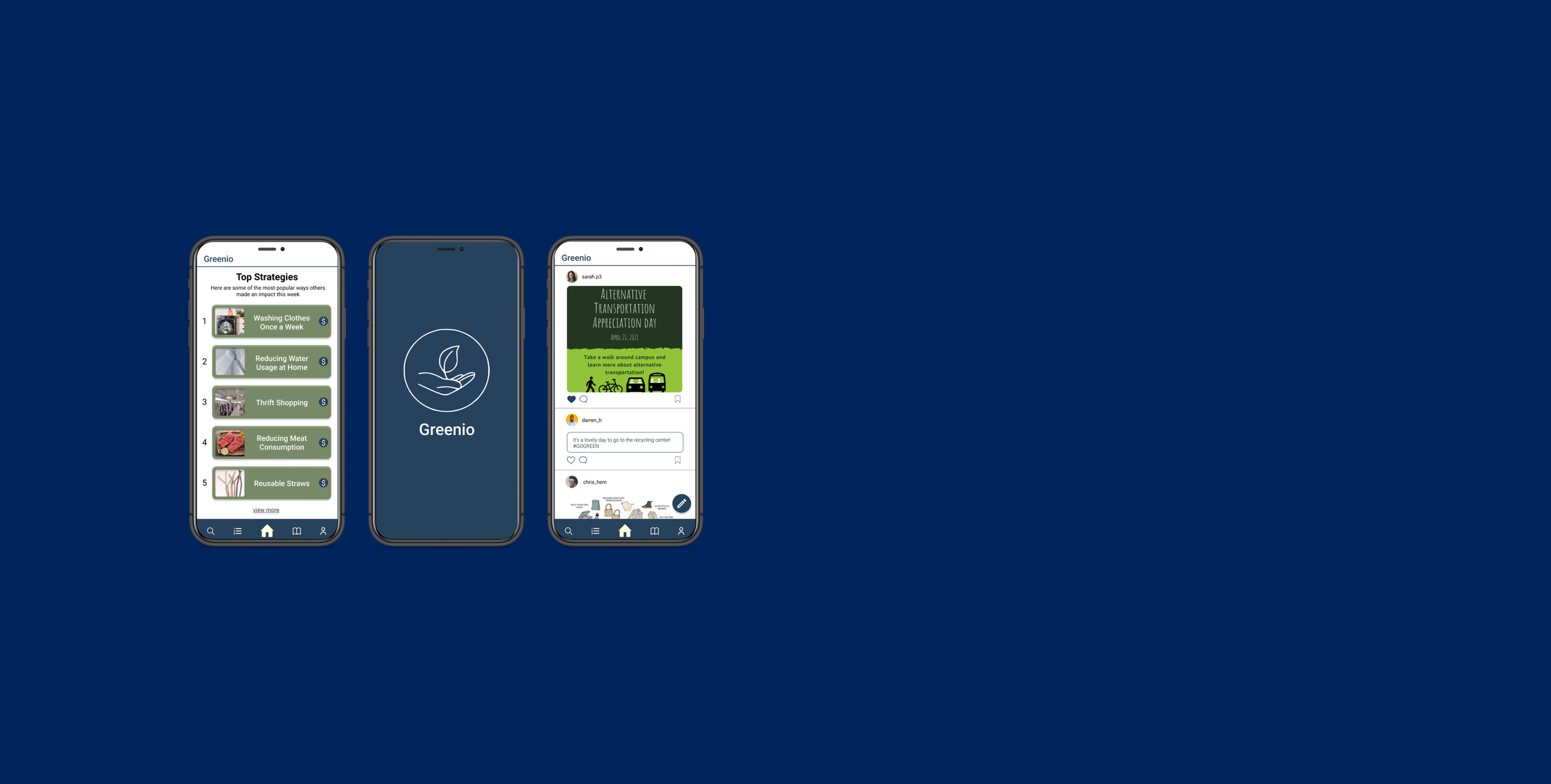
Green.io
Helping people help the environment
An app that helps educate people about being more eco-friendly and become more aware of their eco-footprint.
Overview
Our team created an eco-conscious app to educate people about their carbon footprint and local green initiatives. The app features carbon footprint tracking, local green efforts information, a social feed, and informative articles.
Solution
We developed a user-friendly app that could assist in reducing the waste produced by enabling them to comprehend their impact on the environment, participate in community efforts to shrink their carbon footprint and contribute to the planet's well-being.
Problem
Our society's remarkable productivity has led to increased waste production.
Team
Myself (UI/UX Designer and UX Researcher)
3 UI/UX Designers and UX Researchers
2 App Developers
Role
My role included creating a page with informative articles and contributing to the overall app design.
Research
Competitive Analysis
To gain insights and identify opportunities, we conducted a thorough competitive analysis of existing apps in the market. By examining our competitors' offerings, we were able to pinpoint user pain points and identify areas where we could differentiate ourselves, ensuring our app addressed those gaps effectively.
Consumer Painpoints
Users don’t know where to begin being eco-friendly
Tracking carbon footprints can be convoluted
There isn’t enough relevant information for users to follow
What We Hoped to Address
Create a more simple and streamlined source of relevant information
List easy-to-follow statistics on how to track users’ carbon footprint
Give easy local avenues of being eco-friendly
User Research
We crafted interview questions based on the competitive analysis to assess users' eco-consciousness, allowing us to determine their starting point and provide personalized eco-friendly actions. This approach ensured tailored guidance aligned with users' knowledge and skill levels, fostering sustainable practices aligned with their needs and aspirations.
87%
Didn’t know or think about their carbon footprint
93%
Want to learn to be more environmentally concious.
To gauge the knowledge of the average individual on sustainability and carbon footprint reduction, we conducted interviews with college students, single professionals, and parents. I found that most individuals were interested in sustainability to some extent and willing to make minor changes to their habits.
Key Insights
People of lower economic status value economic viability over environmental impact.
Environmental concern and socioeconomic status are intertwined because socioeconomic status and environmental concern have a positive relationship with each other 1
Individual actions toward sustainability do not give immediate feedback.
An interviewee cares about sustainability but she’s not convinced recycling is a viable solution to most environmental problems and wants to know better ways to be sustainable. Oftentimes, it’s hard to see the impact of sustainable actions
Self-education on sustainability takes too much effort.
Most interviewees had questions about sustainability that included wanting to know more about different ways to be sustainable and what they can do to better influence corporations and policy.
The worst part about sustainability is that there is a limit to one’s individual contribution because large corporations and the nature of our capitalistic economy often discourage sustainable practices that have huge impacts on our environment.
Certain pressures and powers within corporations make it more difficult for environmental change to be accomplished on a big scale. These include stakeholder pressures, regulatory pressures, sociocultural conditions and norms, organizational culture, and managers’ attitudes and behaviors 2
Personas
To reach a diverse audience, we created personas representing various life stages, including a female in her 20s and a male in his 40s. This enabled us to design inclusive features and functionalities that met the unique perspectives and priorities of different users, ensuring a user-centered experience.
Storyboard
Using user data and personas, I crafted a scenario in the initial sketch to emphasize the significance of widespread sustainability education and showcase the app's relevance in users' lives. The six scenes depicted a family making everyday purchases and their aspiration to adopt more sustainable practices while also saving money.
Wireframes
The article page providing users with global eco news.
The scanning page offers users eco-information on products.
The strategy page provides users with quick and easy steps to follow.
In order to provide a user-friendly experience, I opted to adhere to conventional formatting standards by designing a list-like structure for seamless scrolling. This approach eliminates any confusion that may arise from introducing novel elements to users. As part of the iterative design process, I created approximately 2-3 versions of low-fidelity wireframes using Figma, incorporating feedback gathered from user testing and interviews.
User Testing and Hi-Fidelity Wireframes
The chosen participants included those I had previously interviewed, as well as two additional users who were unfamiliar with the app. By representing various life stages, ranging from children to busy parents with multiple responsibilities, I aimed to ensure the app's accessibility across different age groups. The user testing, facilitated through Zoom's screen share, revealed no significant surprises, as everyone demonstrated an understanding of how to navigate the page to accomplish their goals.
Quality Interviews
I learned that conducting quality interviews required clear and concise questioning to avoid obtaining vague and irrelevant information.
Adapting to Different Roles
Stepping out of my comfort zone was a major challenge during the project, as my team members and I had similar skill sets. To complete the project, I conducted research on website building and app UI design, exploring unfamiliar territory beyond my comfort zone.







